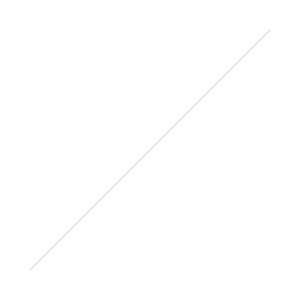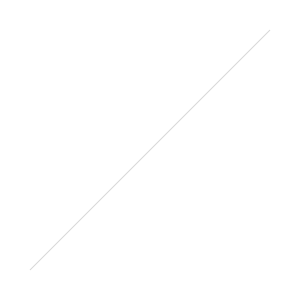Why I Keep My Skin Care “Safer”
August 28, 2017
Okay, so… Confession.
I am in the process of yet another serious cleanup in my life.
It clearly wasn’t enough for me to cut my wardrobe effectively in half, purge tons of my kids’ toys and basically tried to Kondo-fy my entire existence… Now, I’m targeting my real problem zone.
The beauty stash.
For anyone who knows me, this is big.
But the reason I’m cutting into my stash isn’t only because I want less stuff around; it’s also because I want better stuff around.
Some people think that all this attention on clean beauty is a little over the top, and what difference does it make anyway, we’ve already survived Purell-ing our entire bodies for decades?
But my thought on this new “trend?” Well, frankly, a lot of research is starting to show that what we put on our bodies matters, just like what we put in it does. And if it’s easy to make a switch to safer beauty and personal care products, then why the hell not?
But before I proceed with the list of ingredients I have officially banned from my routine, let me state this caveat, for the record:
I am an addict, FOR REAL.
Like, for real for real.
The truth is, I’m not going to stop experimenting with all kinds of products, at least not any time in the near future. (As I’ve said before, I also consider it a public service of sorts to familiarize myself with alllll kinds of stuff, so that I can pass the good word along to you, all my buds, about what I’ve discovered. Information sharing is in my genes. I’M A JOURNALIST, PEOPLE.)
But I will always, always come back to some good basic, safe products, and adhere to a set of standards that I feel keep me and my family a little bit safer.
And that means keeping our products as “clean” as possible.
That’s why I’m glad to be part of a bigger movement to make products safer. It’s not because I believe only one line of products is always right, but it’s because we have to start somewhere.
We have to make sure that guidelines are in place at the federal level so that we, as consumers, don’t have to do the work of scanning labels every single time we make a purchase to make sure that questionable ingredients aren’t included.
So, all that being said, here are the ingredients I always try to avoid, no matter what I’m testing and using!

Parabens
Parabens are chemicals that are used to preserve products. They are found in… well… just about every type of beauty and personal care products.
While some researchers say you probably won’t deal with any problem from the minimal amount that are in most products, other research points to potential problems when you consider our long-term exposure to such ingredients.
Retinyl Palmitate
An ingredient that transforms into Vitamin A when it interacts with you skin, this has been high on the list of no-no’s for watchdog groups like the EWG, who claim that it can cause changes at the cellular level that can speed the risk of cancer.
Some people think the studies that have shown this are blown out of proportion, but
We can agree that a site like LiveStrong.org is pretty middle of the road and reliable, right? So let’s see what they say about it:
“Retinyl palmitate is more controversial in terms of its safety. The website Environmental Working Group says that retinyl palmitate can accelerate the growth of tumors in rats. However, researchers such as Richard Glogau, a clinical professor of dermatology at the University of California, San Francisco, are doubtful the results would be duplicated in humans, according to a July 2010 article on the website of ‘Wall Street Journal.'”
To me, that translates to: Some people think it’s safe, others don’t, so maybe just avoid it if possible because even though I’m not a lab rat, I also want to limit my gambling only to scenarios involving Las Vegas, 2am, and four tequila shots.
Okay, moving on.
Sodium Lauryl Sulfate and Sodium Laureth Sulfate
What are these guys? More or less, the ingredients that make your shampoo all bubbly. They’re cleansing agents, and they’re also found in laundry detergents, hand soaps, mouth washes, bubble baths, soaps and more.
Why are they potentially dangerous? Here’s a simple explanation:
“SLS and SLES are surfactants that can cause skin irritation or trigger allergies. SLES is often contaminated with 1,4-dioxane, a byproduct of a petrochemical process called ethoxylation, which is used to process other chemicals in order to make them less harsh.”
You can get the same suds without the potentially dangerous side effects. Look for shampoos labeled “SLS-free” if you want to jump on the tinfoil-hat brigade with me.
Triclosan
If you’re going to hop on the Woo Woo Train with me and join me in banning any of the chemicals/ingredients on this list so far, LET THIS BE THE ONE.
Triclosan, my friend, is not our friend.
This bacteria-killing agent has been banned from many products, and caused such a concern about its safety that the FDA ended up studying it, and effectively banned it from being marketed to the public.
Why?
“…[M]anufacturers did not demonstrate that the ingredients are both safe for long-term daily use and more effective than plain soap and water in preventing illness and the spread of certain infections.”
Also, there is much evidence to suggest that if it’s germ-killing you’re after, these nasty chemicals are no better than good old soap and water to get rid of them.
So, if we’re banning all these ingredients from our personal care products, what’s there left to love? And use?
Well, as it turns out, a lot!
I just reviewed some of my favorite safer beauty picks here, I’ve also become part of a movement to get safer products in the hands of more people, and of course I will continue to update you on new stuff I find right here, on this blog.
Hope this was informative!
Have you stopped using any ingredients from your personal care products? If so, which ones? What are your favorite alternatives?

P.S. What order do you apply your products in, anyway? And these are some super simple, super cheap ways to make your skin better, starting today!
© 2022 WGT Designed by leche studio
PRIVACY & TERMS
CONNECT
NAVIGATE
Home
Blog
Work With Me
More From Us
Want to be the first to get the latest updates and news?
About
Podcast
Contact
